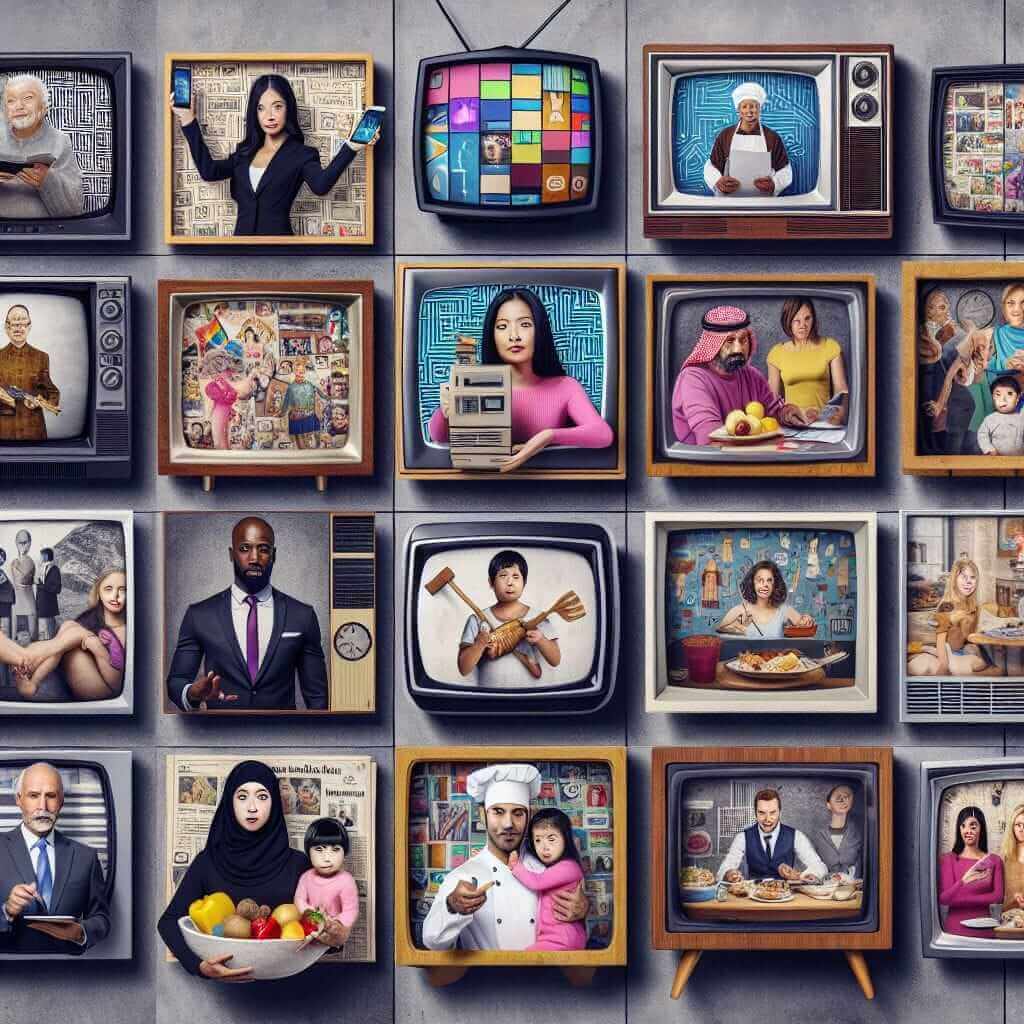The portrayal of genders in media is a recurring theme in IELTS Writing Task 2, reflecting its relevance in today’s world. This essay will delve into the crucial role of balanced gender representation, exploring its impact on societal perceptions and individual aspirations.
Here are some potential essay prompts related to this topic that you may encounter:
- Some argue that media representation of genders is crucial for societal progress, while others believe it’s insignificant. Discuss both views and give your opinion.
- Analyze the impact of stereotypical gender portrayal in media on young minds. To what extent do you agree or disagree that media should be held responsible for promoting positive role models?
- Discuss the measures that can be taken to ensure equal and fair representation of genders in media. Provide specific examples to support your answer.
Sample Essay: Analyzing the Impact of Gender Stereotypes in Media
To what extent do you agree or disagree that media should be held responsible for promoting positive gender role models?
Analysis of the Essay Prompt
This essay prompt requires you to:
- Present your stance: Clearly state your agreement or disagreement with the statement.
- Provide justification: Support your viewpoint with relevant examples and logical reasoning.
- Address both sides: Briefly acknowledge the counter-argument to present a balanced essay.
Sample Essay
It is undeniable that media wields a profound influence on shaping societal norms, particularly among impressionable youth. This essay argues that media bears a significant responsibility to portray positive gender role models, fostering a more equitable and representative society.
Advocates for media neutrality argue that its primary function is to entertain and reflect existing societal values, not to engineer social change. They contend that placing the onus of promoting specific ideologies on media outlets is unrealistic and infringes upon freedom of expression. However, this perspective overlooks the pervasive nature of media in the 21st century. From television shows to social media feeds, media permeates every aspect of our lives, subtly shaping perceptions and reinforcing stereotypes.

Furthermore, research has consistently shown a correlation between media consumption and the development of gender stereotypes. Children exposed to traditional gender roles in movies and television are more likely to internalize these norms, limiting their aspirations and perpetuating gender inequality. For instance, a study by the Geena Davis Institute found that girls exposed to movies with female protagonists in STEM fields were more likely to express interest in pursuing similar careers.
Therefore, it is crucial for media outlets to recognize their responsibility in promoting positive gender role models. By showcasing diverse characters who challenge traditional norms, media can contribute to dismantling harmful stereotypes and empowering individuals to pursue their ambitions irrespective of gender.
In conclusion, while media freedom is paramount, it should not come at the expense of perpetuating harmful stereotypes. Media outlets have a moral obligation to present balanced and progressive representations of gender, fostering a more equitable and inclusive society for future generations. (Word Count: 289)
Writing Tips:
- Use Evidence: Support your arguments with relevant examples from real-world media or research findings.
- Avoid Generalizations: Be specific in your discussion, avoiding sweeping statements about “all media.”
- Define Key Terms: Clearly define terms like “positive role model” and “gender stereotypes” to ensure clarity.
Vocabulary:
- Wields (verb /wiːld/): to have and be able to use power or influence.
- Impressionable (adjective /ɪmˈpreʃənəbl/): easily influenced or affected by something.
- Neutrality (noun /njuːˈtræləti/): the state of not supporting or helping either side in a conflict, argument, etc.
- Onus (noun /ˈəʊnəs/): the responsibility or duty to do something.
- Pervasive (adjective /pəˈveɪsɪv/): (especially of an unwelcome influence or physical effect) spreading widely throughout an area or a group of people.
Conclusion
Mastering the art of writing about complex social issues like gender representation in media requires careful consideration of various perspectives and supporting your arguments with evidence. Remember to use diverse vocabulary and maintain a clear structure to achieve a high band score in your IELTS Writing Task 2.
This guide has provided you with a comprehensive understanding of how to approach essays on this topic. Continue practicing with different prompts and refine your writing skills to confidently tackle any IELTS essay on gender representation in media.